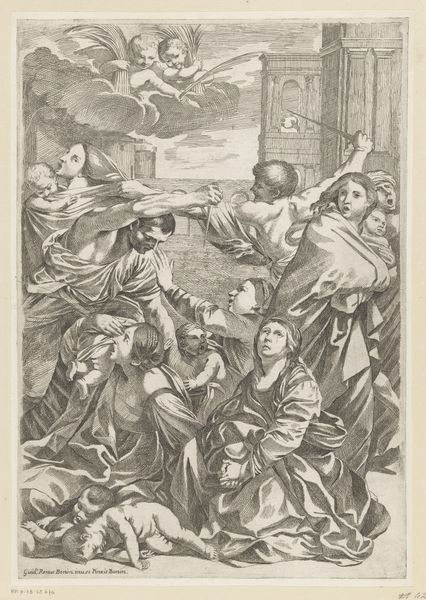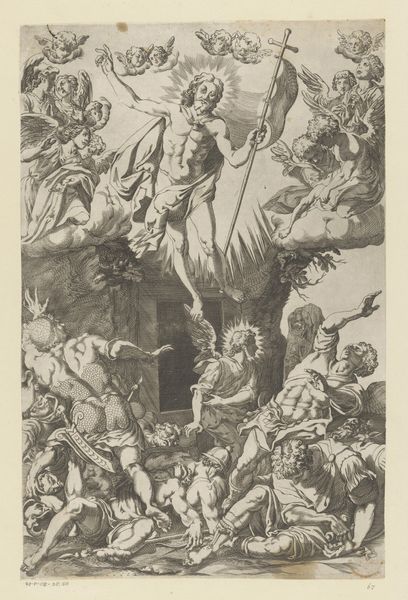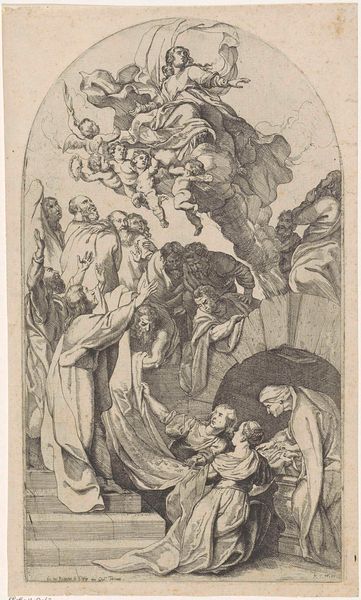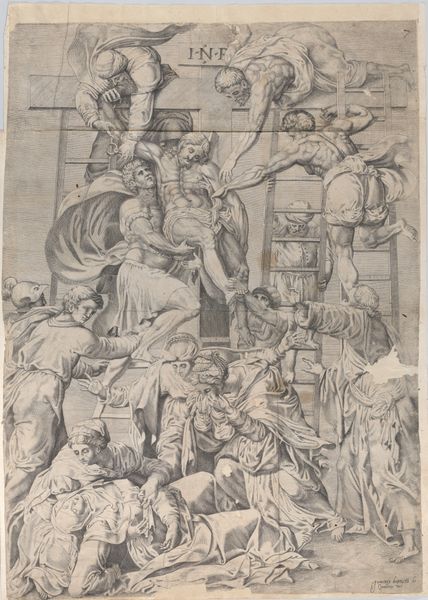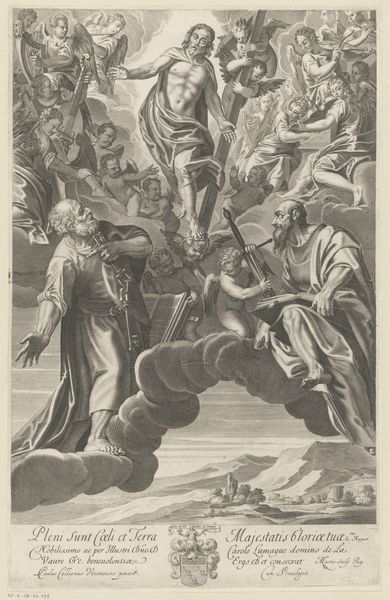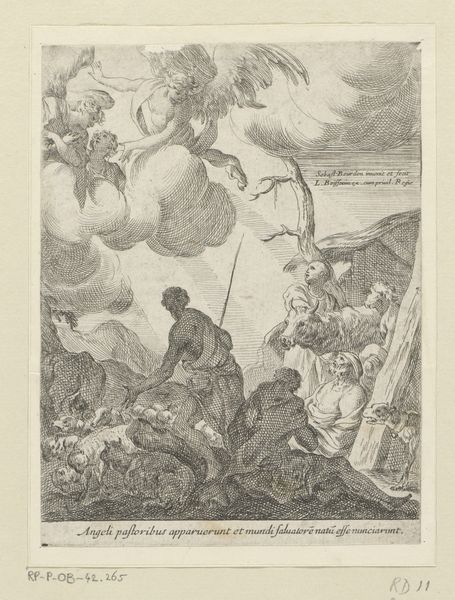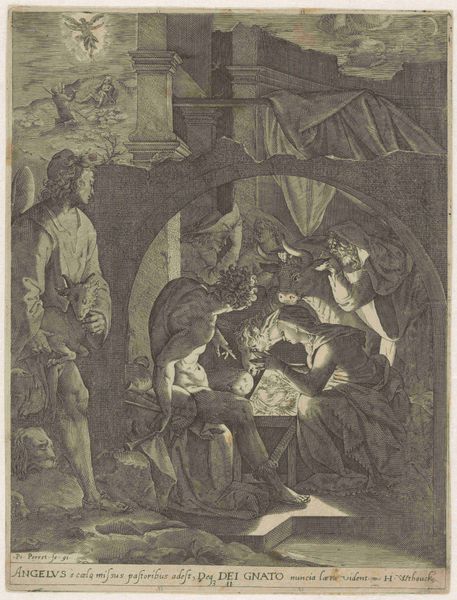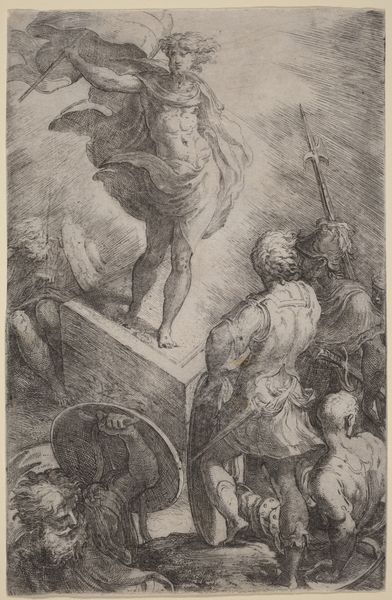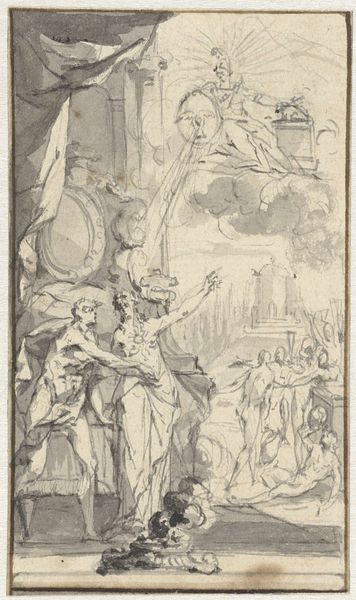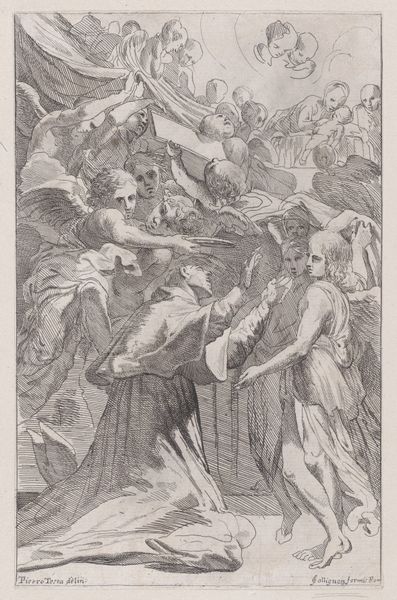
Saint Philip Neri, kneeling at left, with the Virgin and child appearing at upper right 1724 - 1734
0:00
0:00
drawing, print, fresco, engraving
#
portrait
#
drawing
#
baroque
# print
#
fresco
#
engraving
Dimensions: Plate: 15 3/16 × 10 1/16 in. (38.5 × 25.6 cm) Sheet: 21 in. × 15 1/4 in. (53.3 × 38.7 cm)
Copyright: Public Domain
Editor: Here we have Nicolas Le Sueur's "Saint Philip Neri, Kneeling at Left, with the Virgin and Child Appearing at Upper Right," made between 1724 and 1734. It appears to be a print or engraving, perhaps after a drawing. I'm struck by the ethereal quality, the figures floating amidst swirling clouds. How do you interpret this work? Curator: What stands out to me is how this piece embodies the visual language of the Baroque while also reflecting the power dynamics of its time. Le Sueur positions Saint Philip Neri in a pose of supplication, literally looking up to a divinely sanctioned hierarchy with the Virgin and Child at the apex. This isn't just religious devotion; it's a reinforcement of social order, right? Editor: I see what you mean. It's not simply about faith, but about power structures as well. The saint is clearly subordinate to the Virgin and Child. Curator: Precisely! Consider also the cherubs – are they merely innocent figures, or do they also represent a kind of idealized, even infantilized, obedience? How does that lens influence our understanding, particularly when we bring contemporary understandings of societal hierarchies to bear? Editor: That’s a really interesting way of looking at it. I hadn't considered the potential power dynamics embedded within these seemingly pious images. It's fascinating how art can reflect and reinforce societal norms. Curator: Indeed. And how those norms continue to shape our perceptions today. Thinking critically about representation helps us unpack not just art history, but also our own present. It reveals how even seemingly innocent iconography can uphold broader ideologies. Editor: This has really broadened my perspective. I see now how essential it is to examine the historical and social contexts alongside the aesthetic qualities of a piece. Curator: Exactly! Keep questioning. Keep digging. Art history is always a conversation.
Comments
No comments
Be the first to comment and join the conversation on the ultimate creative platform.
